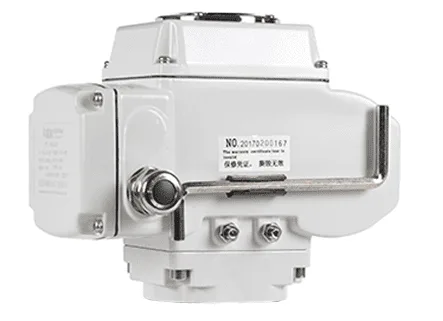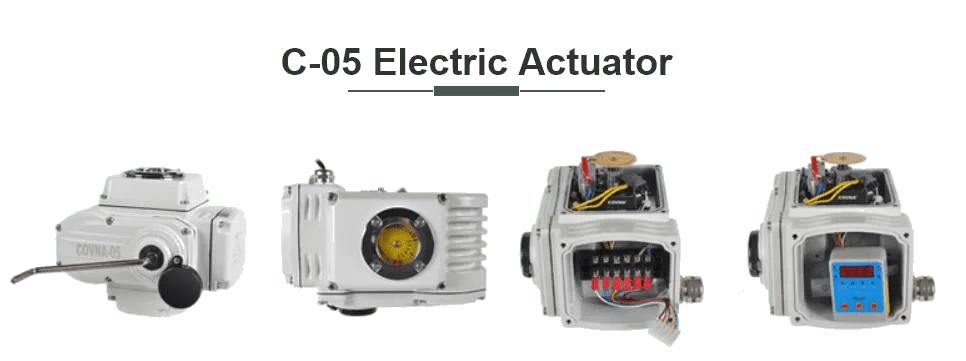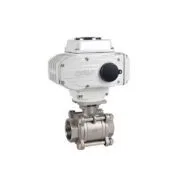



COVNA C-05 Series Intelligence Type Electric Actuator
COVNA C-05 intelligence type electric actuator, aluminum alloy body construction with a visual display screen, can directly view the valve angle, more accurate operation. It can be opened by infrared electric shock of wireless remote controller or by PLC remote control system.
Offering intelligent type electric actuator for your easy actuation solution. Multi control methods for your choice.
- Model: C-05 Regulation Type
- Size Range: C-05 to C-400
- Pressure Range: 1.0 to 6.4MPa
- Material: Aluminum Alloy
Features Of Intelligent Type Electric Actuator:
This device comes with an adjustable angle range of 0 to 90 degrees with a corresponding LED display screen for easier angle reading. Its ISO5211 direct mounting balance with ball and butterfly valves guarantees smooth and trouble-free incorporation. Alongside these features, the device is additionally remarkable due to its low failure rate and high overloading protection class relative to other devices, making it reliable and durable for many uses.
| Model | 05 | 10 | 16 | 30 | 60 | 125 | 250 | 400 |
| Torque Output | 50Nm | 100Nm | 160Nm | 300Nm | 600Nm | 1250Nm | 2500Nm | 4000Nm |
| 90°Cycle Time | 20s | 15s/30s | 15s/30s | 15s/30s | 30s | 100s | 100s | 100s |
| Angle of Rotation | 0-90° | 0-90° | 0-90° | 0-90° | 0-90° | 0-90° | 0-90° | 0-90° |
| Working Current | 0.25A | 0.48A | 0.68A | 0.8A | 1.2A | 2A | 2A | 2.7A |
| Starting Current | 0.25A | 0.48A | 0.72A | 0.86A | 1.38A | 2.3A | 2.3A | 3A |
| Drive Motor | 10W/F | 25W/F | 30W/F | 40W/F | 90W/F | 100W/F | 120W/F | 140W/F |
| Product Weight | 3kg | 5kg | 5.5kg | 8kg | 8.5kg | 15kg | 15.5kg | 16kg |
| Voltage Option | AC 110V, AC 220V, AC 380V, DC 12V, DC 24V | |||||||
| Input Signal | 4-20mADC 1-5VDC 0-10VDC | |||||||
| Output Signal | 4-20mADC 1-5VDC 0-10VDC | |||||||
| Tolerance | ±0.5% | |||||||
| Return Difference | <0.3% | |||||||
| Dead Zone | 0.1% to 1.6% | |||||||
| Damping Characteristics | 0 | |||||||
| Mechnical Repeatability Error | 0% | |||||||
| Note | 90° Cycle time: travel from closed position to open position or vice versa Duty cycle for 24VAC will be approximately 20% | |||||||





